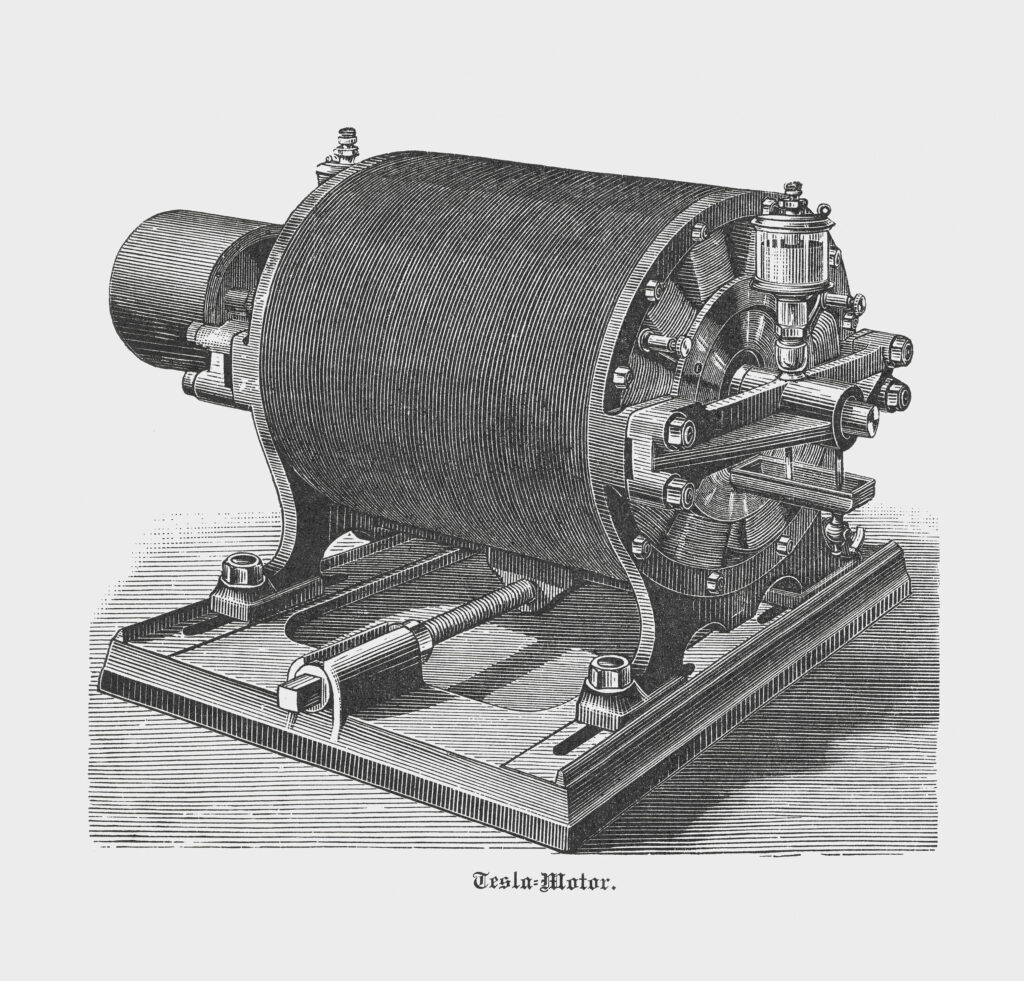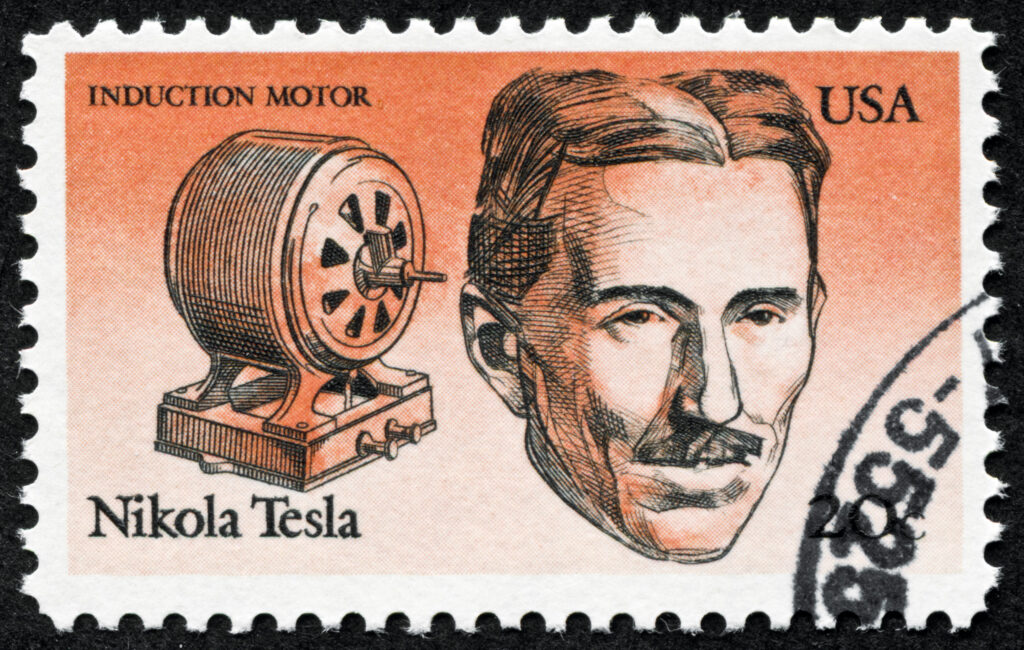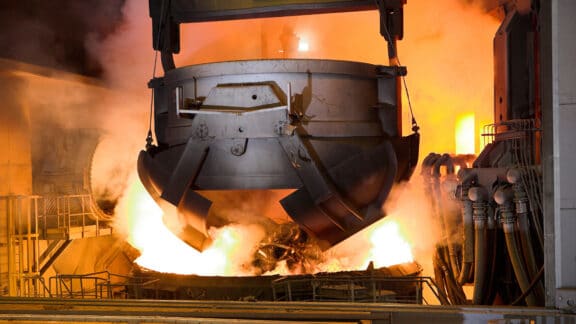At Primetals Technologies, we constantly strive to pioneer new and groundbreaking solutions for the steel industry. We work with passion, inspired by our close partnerships with steel producers from all around the world. Another source of inspiration are the great pioneers that have come before us—innovators who have made a profound impact on the way we live and changed the course of history. In this series, we look at the life, the challenges, and the achievements of some of the most outstanding pioneers of all time. This time, we present visionary inventor Nikola Tesla.
Who is the man whom Edwin H. Armstrong, American electrical engineer and inventor, regarded “one of the greatest geniuses of all time?” What is the story behind the person who lent his name to the car company led by world-famous entrepreneur Elon Musk? Hollywood movies like Christopher Nolan’s 2006 picture “The Prestige” have done much to add to the aura of the name Tesla. But while Nikola Tesla undoubtedly had a brilliant mind and was the father of many inventions, his life was also complicated and not without personal struggle and disappointment.
Nikola Tesla was born in Smiljan, Croatia, on July 10, 1856, into a very religious family, with Tesla’s father being a Serbian Orthodox priest. Tesla’s early life was already marked by hardship: His brother died in a riding accident when Tesla was five years old, and his father had a tendency to rigorously demand perfection from his son. Despite these challenges, Tesla showed an early aptitude for science and invention. He attended the Austrian Polytechnic in Graz, Austria, and later worked for the Continental Edison Company in Paris, France.
- … that Nikola Tesla was fluent in eight languages, including Serbian, English, French, German, and Italian.
- … that Tesla was known for his eccentricities, such as his practice of staying up all night and his aversion to round objects and jewelry.
- … that the innovator was a lifelong bachelor and claimed to never have had a romantic relationship. Tesla stated that his work and inventions were his only passions in life.
- … that Tesla had a photographic memory and was known for being able to visualize his inventions and designs in his mind before ever putting them down on paper.
- … that a rivalry existed between Tesla and Thomas Edison, because the two disagreed over the use of AC versus DC electricity.
- … that Tesla held over 300 patents during his lifetime, including for his invention of the Tesla coil—a device that produces high-voltage, low-current electricity.
- … that the basis of Teslas pioneering work in wireless communication was his belief that he could develop a system for transmitting messages and power without any wires.
- … that Nikola Tesla was a vegetarian.
Tesla moved to the U.S.A. in 1884 to directly collaborate with Thomas Edison, the inventor and businessman who had patented the electric light bulb. However, the two men had a falling out over the design of Edison’s electrical supply system. Edison was a proponent of direct current (DC) power, while Tesla believed that alternating current (AC) was more efficient and versatile. The pair became bitter rivals, with Edison even publicly electrocuting animals with AC power in a misguided attempt to discredit Tesla’s work.
When the relationship with Edison went astray, Tesla decided to continue pushing the boundaries of electrical engineering on his own. Tesla was fascinated with wireless power transmission, envisioning a future where electricity could be transmitted wirelessly through the air, without the need for wires or cables. Over the course of his experiments with wireless power distribution, Tesla made several observations about the nature of electromagnetic waves. He started to think that radio waves could be used for communication, and patented a number of radio designs in the early 1900s. Unfortunately, his patents were eventually invalidated by the United States Patent Office in favor of Guglielmo Marconi, an Italian inventor who is often credited with the invention of the radio.
Tesla achieved greater success and more widespread recognition with the “Tesla coil,” a core component for wireless long-distance communication systems. The Coil laid the groundwork for the development of modern broadcasting and consists of a primary and a secondary coil. The primary coil is connected to a power source and produces a high-frequency alternating current that creates a magnetic field. This field induces a high voltage in the secondary coil, which then generates a spark. By demonstrating the principles of resonant induction, the Tesla Coil was instrumental in the development of technologies such as Wi-Fi, Bluetooth, and cellular networks. Tesla may not have been able to fully realize his vision of wireless communication and wireless power in his lifetime, but his work paved the way for many later inventions. Today, not only wireless communication but also wireless charging are realized by smartphones and many other devices.
An Eccentric Genius
Tesla’s life was marked by many eccentricities. He was known for his seemingly outlandish behavior and was a recluse later in life, often spending long periods of time in solitude. Tesla was also plagued by financial difficulties, and he died penniless in a New York hotel room in 1943. Tesla had a strong aversion to germs and dirt, and would frequently wash his hands and change his clothes. A believer in numerology, he thought that numbers had a mystical significance. Tesla was also a vegetarian and reportedly subsisted on a diet of milk, bread, honey, and vegetable juices. Known to work incredibly long hours, he often stayed up for days at a time without sleep. Tesla claimed to have never had a romantic relationship in his life, and that his experiments and his inventions were his only passions.
Tesla was also known for his showmanship and love of spectacle. He would perform public demonstrations of his inventions, such as lighting up entire buildings with his wireless lighting system. He also had a flair for the dramatic and would often make grandiose statements about his work and the future of technology. Far ahead of his time, he advocated that humanity should embrace renewable energy sources. Tesla believed that it was possible to harness the power of the sun to provide clean energy to everyone. He also saw a world where transportation was powered by electricity, and he designed a prototype electric car in 1931, decades before the widespread adoption of electric vehicles.
Tesla is the most original mind in American history.”
Thomas Edison
Inventor of the electric light bulb
and founder of Edison Electric
Light Company
Changing the World
Tesla’s contributions to science and technology have transformed the world we live in, and his visionary ideas continue to shape our understanding of the universe and our place in it. AC generators, motors, and transformers have made it possible to transmit electricity over long distances, and to power homes, businesses, and industries. Without Tesla’s inventions, it’s unlikely that our modern world would have access to the abundance of electrical power that we take for granted today. In addition to his technical achievements, Tesla was also a forward-thinking visionary who imagined a future filled with scientific wonders. He predicted the development of today’s mobile phones and drones, long before these technologies became a reality. His conviction that, by turning sunlight into electrical energy, the world could tap into an endless supply of sustainable energy can be seen as a window into the future—a future in which solar and wind have become a central part of many countries’ renewable energy strategies.

Tesla’s legacy is also a reminder of the importance of pursuing one’s passions and pushing the boundaries of what is possible. Despite facing numerous setbacks and obstacles throughout his life, Tesla remained dedicated to his work and never gave up on his dream of creating a better world through science and discovery. His example is an inspiration to pioneer new things, to be brave enough to take risks, and to never lose sight of your vision, no matter how daunting the challenges. Tesla’s personal problems and eccentricities only add to the allure of his story and make his legacy all the more compelling. He remains an inspiration to scientists, inventors, and futurists around the world—a testament to the power of imagination, innovation, and perseverance.

Nikola Tesla has not only adorned banknotes and stamps (pictured) but has also become a popular figure in Hollywood films, appearing as a character in a number of movies over the years. Tesla’s genius, eccentricity, and mystique have made him a compelling subject for filmmakers, and his life and work continue to captivate audiences.
One of the most prominent portrayals of Tesla in recent years was in the 2006 film “The Prestige,” directed by Christopher Nolan. The film, which is set in the late 19th century, follows two rival magicians who become embroiled in a bitter competition to create the most spectacular illusions. Tesla, played by singer and actor David Bowie, is brought in by one of the magicians to help him create a groundbreaking new trick that will amaze audiences and win him the competition. Much like Tesla in real life, the magician ends up paying a high price for flying quite so close to the sun. Tesla also appeared as a character in the 2019 biopic “Tesla,” which explores the inventor’s life and work in more detail. The film, which stars Ethan Hawke as Tesla, delves into the complexities of Tesla’s personality, his relationship with Thomas Edison, and the challenges he faced as he tried to bring his inventions to life.
Overall, Nikola Tesla’s legacy as an inventor and electrical engineer continues to inspire filmmakers and audiences alike. Through his appearances in Hollywood films, Tesla has become an icon of innovation and creativity, and his work remains a testament to the power of the human mind to transform the world around us.
Timeline
1856
Born on July 10th in Smiljan, Croatia, to Serbian Orthodox parents.
1875
Enrolls at the Austrian Polytechnic in Graz, Austria, where he studies physics and mathematics.
1881
Moves to Budapest, Hungary, to work for the Central Telephone Exchange as an electrical engineer.
1884
Emigrates to the United States and begins working for Thomas Edison’s company, the Edison Machine Works.
1887
Develops the alternating current motor and transformer, which revolutionizes the field of electrical power transmission.
1891
Becomes a naturalized citizen of the United States.
1893
Performs demonstrations of the potential of alternating current at the World’s Columbian Exposition in Chicago, Illinois, U.S.A.
1895
Begins work on the wireless transmission of power, a project that he continues to work on for the rest of his life.
1915
Files for bankruptcy and loses control of his company, the Tesla Electric Company.
1943
Dies on January 7 in New York City, at the age of 86.


